Sustainable Cocoa Value Chain in the Eyes of Indigenous Wisdom: A Case Study
Chidimma Ifeh1, Helen Agu2, Fernanda Santos3 and Wan-Yuan Kuo1
- Sustainable Food Systems, Department of Food Systems, Nutrition, and Kinesiology, Montana State University, Bozeman, MT, USA
- Department of Food Science and Technology, Nnamdi Azikiwe University, Awka, Nigeria
- Department of Food, Bioprocessing and Nutrition Sciences, North Carolina State University, Raleigh, USA
Abstract
Achieving a sustainable value chain requires collaborative efforts between cocoa farmers, chocolatiers, and chocolate companies, integrating indigenous wisdom with modern practices. This study explores the challenges and interests of cocoa farmers and chocolatiers in achieving a sustainable cocoa bean-to-bar practice, focusing on smallholder cocoa farmers and chocolate companies in Ondo, Nigeria, and chocolatiers in Montana, USA. The cocoa farmers, chocolatiers, and chocolate companies were interviewed using semistructured questionnaires. Farmers in Nigeria highlighted the seasonal timing of cocoa harvests, planting practices, fermentation processes, challenges in farming, government support, and the significance of cocoa farming to their families and communities. Challenges included physical strength requirements, climate impacts, disease management, and the need for more interest among youth in cocoa farming. Chocolatiers in the USA discussed company backgrounds, cocoa sourcing, production processes, challenges, innovation potentials, and consumer feedback. Challenges included financial constraints, equipment reliability issues, and the need for market adaptation. The study sheds light on the intricate dynamics of the cocoa value chain from the perspectives of indigenous knowledge from farmers and chocolatiers.
Background
Cocoa beans are seeds from the tree Theobroma cacao L, native to the Amazon and grown in tropical rainforests in Central and South America [1]. Although cocoa originated in the Americas, 70% is grown in West Africa [2].
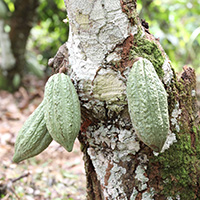 |
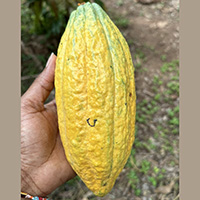 |
Figure 1: Unripe and ripe cacao pods
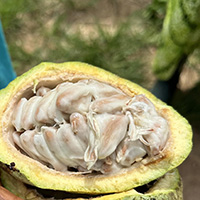 |
 |
Figure 2: Fresh and dried cocoa beans
|
Farmers
|
Chocolate Companies
|
Chocolatiers
|
|---|---|---|
|
|
|
Methods & Results
Figure 3: Interview question categories and research participants
Cacao pods
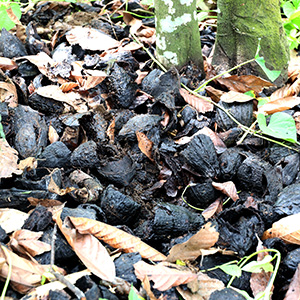
Cocoa shells

Byproducts usage
- Pig feed
- Shoe polish
- Black soap
- Mosquito repelling coils
Figure 4: Byproducts from cocoa beans and chocolate
|
Theme
|
Farmers
|
Chocolate Companies
|
Chocolatiers
|
|---|---|---|---|
|
Practices
|
|
|
|
|
Interests
|
|
|
|
|
Challenges
|
|
|
|
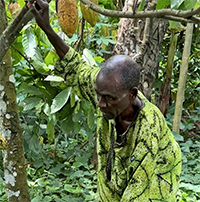 |
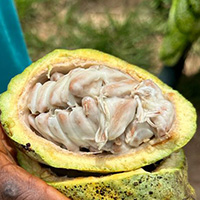 |
 |
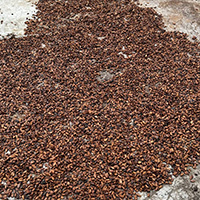 |
| Harvesting | Pod breaking | Box fermentation | Sun drying |
Figure 5: Farmers' cacao pods to cocoa beans process
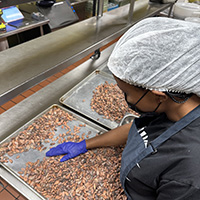 |
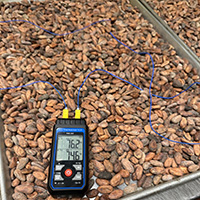 |
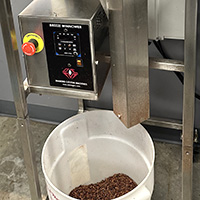 |
| 1 - Sorting | 2 - Roasting | 3 - Winnowing |
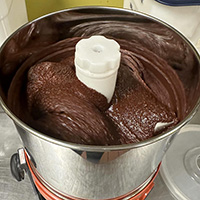 |
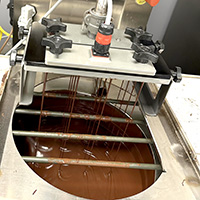 |
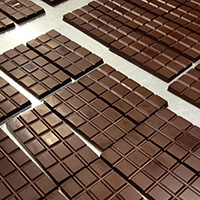 |
| 4 - Refining | 5 - Tempering | 6 - Molding |
Figure 6: Chocolatiers and chocolate companies' cocoa beans to chocolate bars process
Conclusions
This research project reveals cocoa and chocolate's deep significance in Ondo and Montana, USA. It serves as the economic backbone, supporting livelihoods and generating export income. The sustainability of this traditional practice is further complicated by the reluctance of educated youth to continue cocoa farming, inadequate government support, and the influence of modern trends.
|
Theme
|
Farmers
|
Chocolate Companies
|
Chocolatiers
|
|---|---|---|---|
|
Practices
|
Cocoa pod upcycling
|
Premium chocolate production
|
Diverse cocoa origin
|
|
Interests
|
Preserving cultural heritage
|
Expansion and export
|
Eco-friendly packaging
|
|
Challenges
|
Recruiting younger generations Cocoa pricing |
Financial constraints Expensive and faulty equipment |
|
The findings contribute to the ongoing discourse on sustainable cocoa production and
its implications for local communities and global chocolate industries. Further research
and policy interventions are warranted to promote global inclusive and environmentally
friendly cocoa value chains.
Acknowledgements
This research was fully funded by Mars Wrigley. The Montana State University College of Education, Health, and Human Development contributed to travel funding. The authors are solely responsible for this publication's content, which does not reflect the official views of any entities indicated above. We also acknowledge the farmers and chocolate companies in Nigeria and the chocolatiers in Montana, USA.
References
[1] Caligiani, A., Marseglia, A., & Palla, G. (2016). Cocoa: Production, Chemistry, and Use. In Encyclopedia of Food and Health (pp. 185-190). Elsevier. https://doi.org/10.1016/B978-0-12-384947-2.00177-X
2] ICCO. (2023, February 28). Global cocoa bean production from 2020/21 to 2022/23, by country (in 1,000 metric tons) [Graph]. Statista. https://www.statista.com/statistics/263855/cocoa-bean-production-worldwide-by-region/

